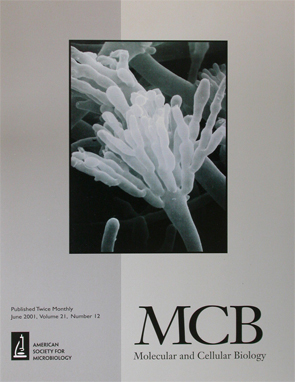Schier et al. 2001
A pcl-like cyclin of Aspergillus nidulans is transcriptionally activated by developmental regulators and is involved in sporulation. Mol. Cell. Biol., 21(12), 4075-4088.
Schier, N., Liese, R. & Fischer, R.
Abstract
The filamentous fungus Aspergillus nidulans reproduces asexually through the formation of spores on a multicellular aerial structure, called a conidiophore. A key regulator of asexual development is the TFIIIA-type zinc finger containing transcriptional activator Bristle (BRLA). Besides BRLA, the transcription factor ABAA, which is located downstream of BRLA in the developmental regulation cascade, is necessary to direct later gene expression during sporulation. We isolated a new developmental mutant and identified a leaky brlA mutation and the mutated Saccharomyces cerevisiae cyclin homologue pclA, both contributing to the developmental phenotype of the mutant. pclA was found to be 10-fold transcriptionally upregulated during conidiation, and a pclA deletion strain was reduced three- to fivefold in production of conidia. Expression of pclA was strongly induced by ectopic expression of brlA or abaA under conidiation-suppressing conditions, indicating a direct role for brlA and abaA in pclA regulation. PCLA is homologous to yeast Pcl cyclins, which interact with the Pho85 cyclin-dependent kinase. Although interaction with a PSTAIRE kinase was shown in vivo, PCLA function during sporulation was independent of the A. nidulans Pho85 homologue PHOA. Besides the developmental regulation, pclA expression was cell cycle dependent with peak transcript levels in S phase. Our findings suggest a role for PCLA in mediating cell cycle events during late stages of sporulation.

